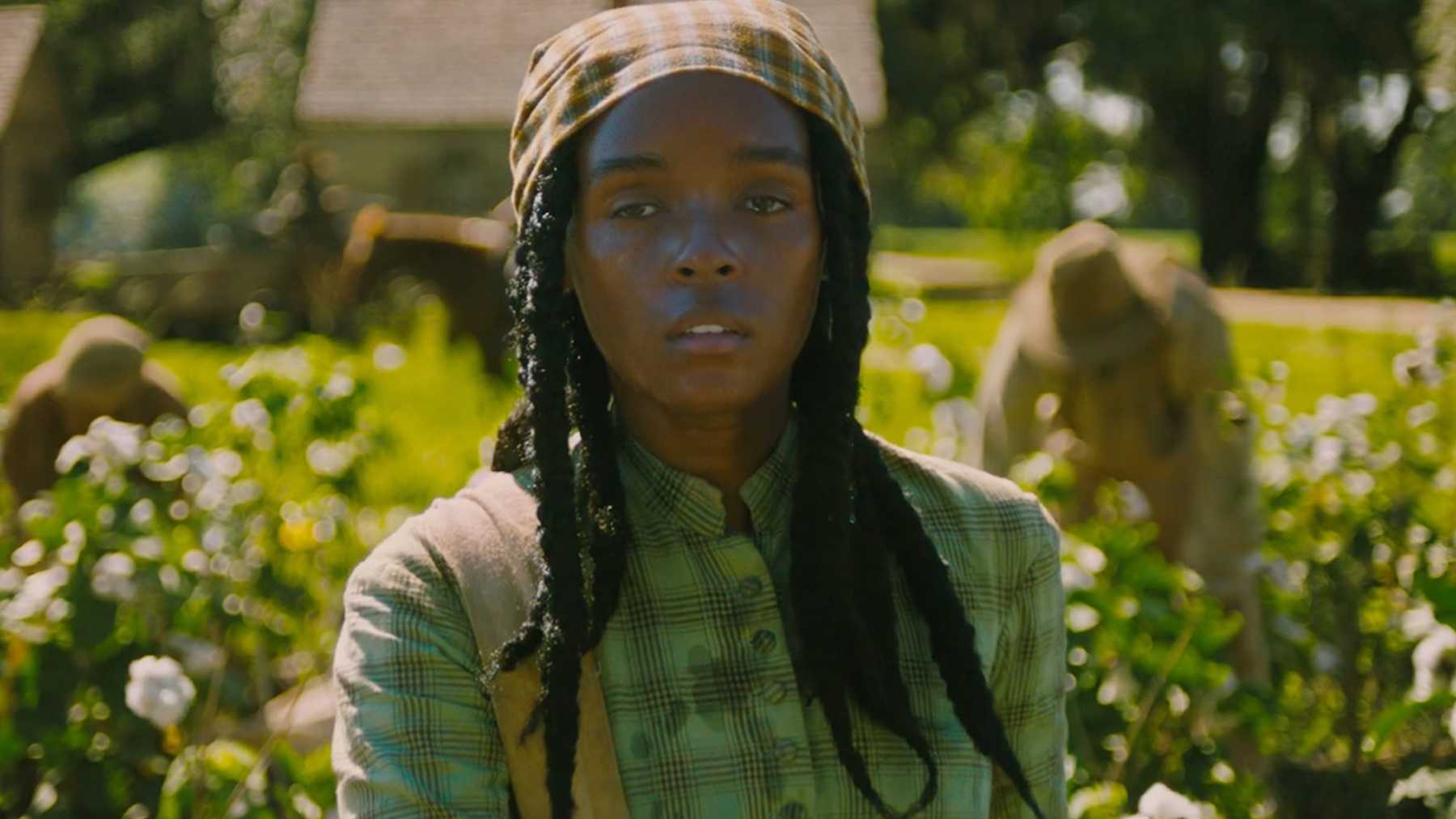“Antebellum” – On June 30, 2020, Mississippi Gov. Tate Reeves signed a law to remove its state flag, a decision that drew vast Magnolia State and U.S. support. Most of the state’s emblem resembled Serbia and Montenegro’s with large horizontal bars of benign blue, white, and red; however, the top left corner featured a pronounced squared version of the Confederate battle flag. It has a red background with a blue “X” (or cross) and 13 small white stars. Most of us have seen this Confederate States of America symbol from the history books, but for Mississippi residents traveling within their communities, they’ve faced this logo all their lives, as a painful reminder of the Southern States’ stance on slavery.
Writer/directors Gerald Bush and Christopher Renz open “Antebellum” with a long, continuous shot – perhaps five minutes long – of a southern plantation. Accompanied with a solemn – almost-gently-screeching – string score, their camera winds through a sprawling complexity of land and human beings working in disharmony. Bush and Renz offer wide-open looks at lush, green grasses, trees, and a massive household and then slowly reveal wooden shanties, as wealthy landowners, Confederate soldiers, and slaves fill their designed places.
The setting is not Mississippi, but nearby Louisiana during The Civil War, and the specific locale is a Confederate Army hub, as a few hundred soldiers saunter about while the slave workforce tends to their needs and picks cotton for hours on end in the nearby fields. This dim existence should immediately raise memories from recent films of this shameful period in U.S. history, including “12 Years a Slave” (2013) and “Django Unchained” (2012). This particular location looks eerily similar to Quentin Tarantino’s movie, while “Antebellum” delivers similar, ugly events from Steve McQueen’s 2014 Oscar-winning film.
The filmmakers certainly set an unsettling tone from the get-go and soon focus on the main protagonist. Eden (Janelle Monae) is a 30-something, childless slave, who is despondent and utterly exhausted but still desperate for escape. Julia (Kiersey Clemons) – a newbie – arrives on-site, and she asks Eden for a getaway plan, but the elder stateswoman doesn’t have any answers. Meanwhile, the brutish men in power ride horseback, lurk with rifles, and strike with visceral violence if the permanent-indentured servants don’t obey orders.
“Antebellum” is a forbidding time machine, one filled with striking images, hues, rich lighting, and detailed costume design of a period that also physically matches the ugly physicality and institutional racism woven into the South’s economic engine of the 1860s. Soldiers’ chants of “blood and soil” and an officer’s (Eric Lange) declaration that the “blue-bellied bastards are on their heels” give little hope to the black prisoners within earshot.
It’s a film that effectively evokes raw feelings with near-zero subtly, but this is not a typical thriller or slavery film. While “Antebellum” strikes with blunt instruments and burns with a branding iron, it twists us into movie-magic knots and confusion too. This picture doesn’t reach the heights of Tarantino’s and McQueen’s aforementioned masterpieces, but Bush and Renz’s picture has a rightful place as a challenging cinematic experience….and a reminder of the past. Just ask any Mississippi resident in 2020.
⭐⭐ 1/2 out of ⭐⭐⭐⭐
Image credits: Lionsgate Pictures




